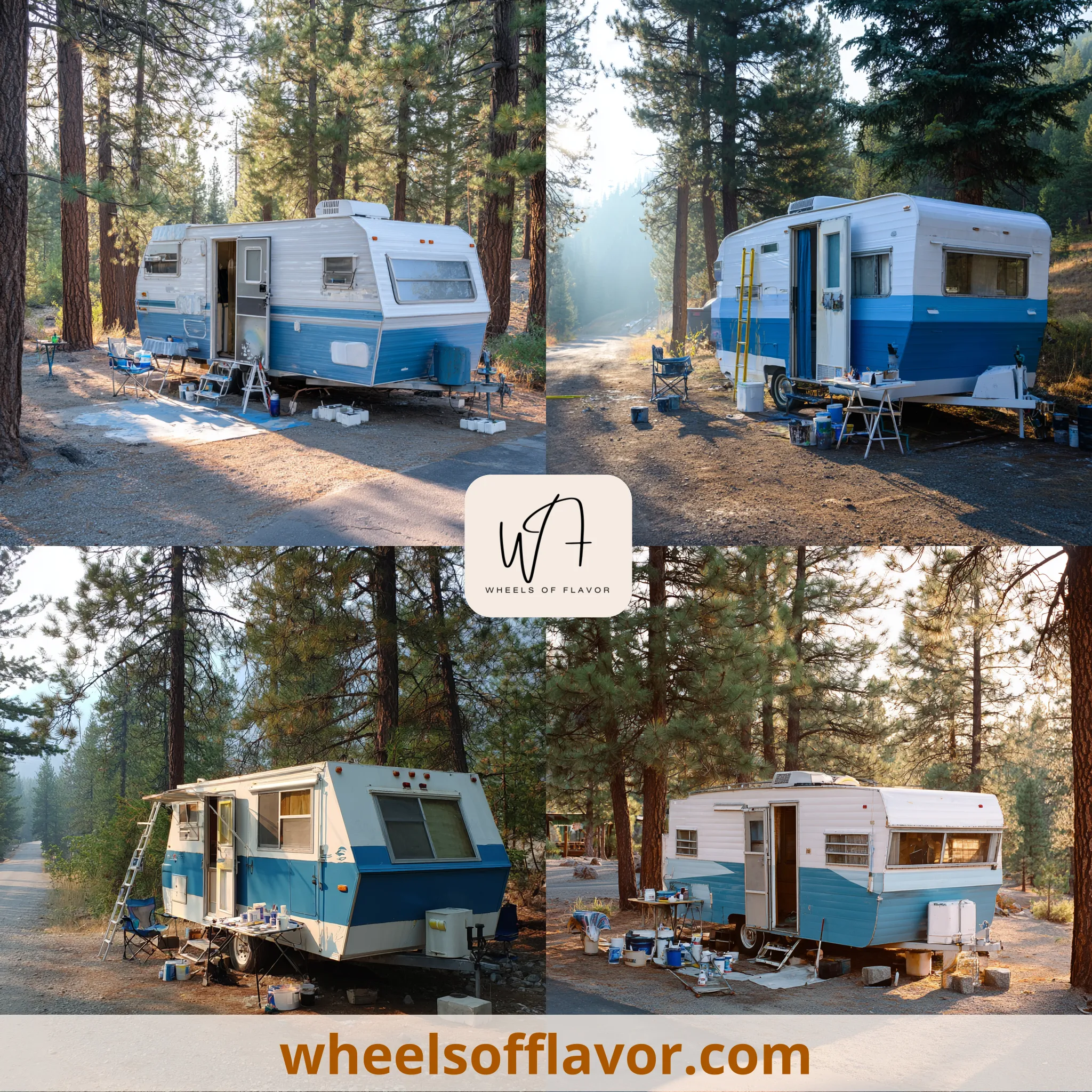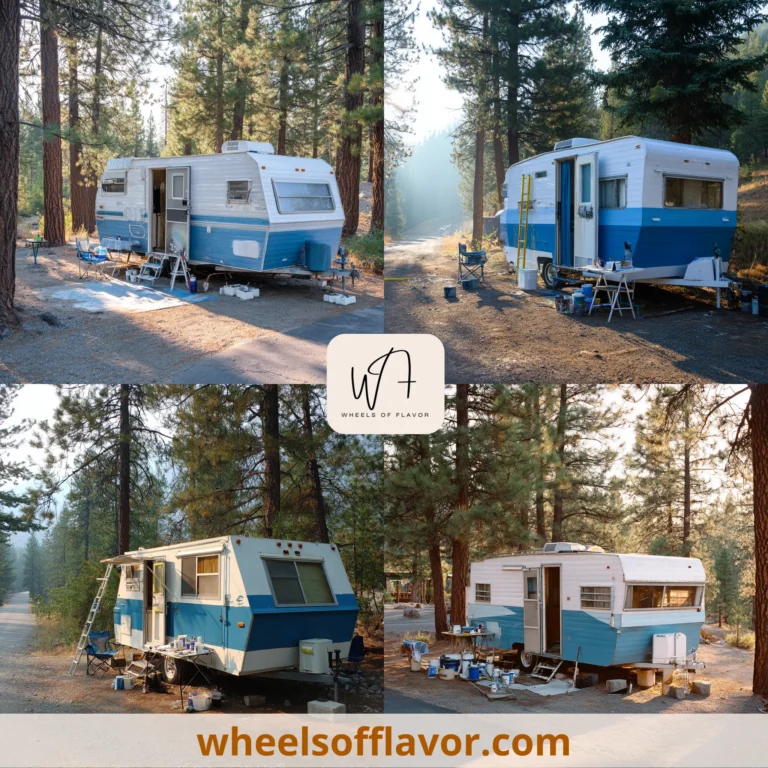
Your pop up camper is more than just a vehicle; it’s your home on wheels, and its exterior is the first thing you and others see. Choosing the right pop up camper exterior paint ideas can dramatically enhance its appearance, protect it from the elements, and even increase its resale value. Whether you’re looking to refresh a faded finish or completely reinvent your camper’s look, a fresh coat of paint offers endless possibilities for personalization. With 9 incredible ideas to explore, you can transform your camper from bland to breathtaking, making every camping trip feel like a stylish adventure. The right paint job not only boosts curb appeal but also shields the surface from UV rays, moisture, and wear, ensuring your investment lasts longer. In this article, we’ll dive into practical and inspiring pop up camper exterior paint ideas that cater to various styles and budgets. From bold colors to subtle patterns, you’ll discover how a simple update can make your camper stand out in any campground. Get ready to be inspired and learn why exterior painting is a game-changer for pop up camper enthusiasts. For more tips on camper customization, check out our guide on DIY upgrades at https://wheelsofflavor.com/camper-diy.
Pop Up Camper Exterior Paint Ideas: Classic Color Schemes
Classic color schemes are a timeless choice for pop up camper exterior paint ideas, offering a clean and elegant look that never goes out of style. Think of shades like crisp white, navy blue, or forest green, which evoke a sense of tradition and reliability. These colors are not only visually appealing but also practical, as lighter tones like white reflect heat, keeping the interior cooler in summer, while darker hues can hide minor dirt and scratches. When selecting a classic palette, consider pairing a main color with accents—for example, a white base with red trim can create a vibrant yet sophisticated appearance. It's essential to use high-quality exterior paint designed for vehicles or RVs, as it provides durability against weather conditions. Preparation is key: start by thoroughly cleaning the surface, sanding any rough spots, and applying a primer to ensure adhesion. Many camper owners opt for spray paints for an even finish, but brushes work well for detailed areas. This approach not only revitalizes your camper but also maintains its resale value. For inspiration, look at vintage camper models or browse online galleries. Remember, classic doesn't mean boring; you can add subtle patterns or decals to personalize it. With proper care, a classic paint job can last for years, making your pop up camper a standout on any road trip.
Pop Up Camper Exterior Paint Ideas: Bold and Modern Designs
If you want to make a statement, bold and modern pop up camper exterior paint ideas are the way to go. Embrace vibrant colors like electric blue, fiery orange, or metallic silver to give your camper a contemporary edge. These designs often feature geometric patterns, stripes, or gradients that break away from traditional looks, reflecting a fun and adventurous spirit. Modern paints, such as automotive finishes with UV protection, ensure the colors stay bright and resist fading. When planning a bold design, sketch it out first or use digital tools to visualize the result. You might opt for a two-tone scheme, like a black roof with a neon accent wall, or incorporate abstract art for a unique touch. It's crucial to use masking tape for clean lines and work in a well-ventilated area. Bold colors can also influence mood; for instance, yellow can evoke happiness, while deep purple adds luxury. However, keep in mind that very dark colors may absorb more heat, so balance aesthetics with practicality. This style is perfect for those who see their camper as an extension of their personality. Many DIY enthusiasts share their projects on forums, offering tips for success. With a bit of creativity, you can turn your pop up camper into a mobile masterpiece that turns heads at every stop.
Pop Up Camper Exterior Paint Ideas: DIY Tips and Techniques
Tackling pop up camper exterior paint ideas as a DIY project can be rewarding and cost-effective, but it requires careful planning and the right techniques. Start by assessing your camper's condition; if there's rust or damage, address it before painting. Gather supplies like sandpaper, primer, paint (acrylic or enamel-based for durability), and clear coat for protection. Choose a dry, mild day for painting to avoid issues with humidity or wind. Begin with a thorough cleaning using a degreaser, then sand the surface to create a smooth base. Apply primer evenly and let it dry completely—this step is crucial for paint adhesion. When painting, use even strokes with a spray gun or roller for large areas, and a brush for details. Work in sections to maintain consistency, and apply multiple thin coats rather than one thick one to prevent drips. Allow each coat to dry as per the product instructions. For complex designs, use stencils or vinyl decals. Safety is paramount: wear a mask and goggles, and ensure good ventilation. After painting, add a clear coat to shield against UV rays and scratches. Regular maintenance, like washing with mild soap, will keep the finish looking new. DIY projects not only save money but also give you a sense of accomplishment. For more detailed guides, visit resources like Family Handyman for expert advice.
Conclusion
In summary, exploring pop up camper exterior paint ideas opens up a world of creativity and practicality for enhancing your mobile home. From classic color schemes that offer timeless appeal to bold modern designs that make a statement, and DIY techniques that empower you to take charge, these 9 ideas demonstrate how a simple paint job can transform your camper's identity. Not only does a fresh exterior boost aesthetics, but it also provides essential protection against the elements, extending the life of your investment. As you plan your project, remember to prioritize quality materials and proper preparation for the best results. The future of camper customization looks bright, with trends leaning towards eco-friendly paints and personalized graphics. Whether you're a seasoned DIYer or a beginner, start small with a test area and build confidence. Your pop up camper is a canvas waiting for your touch—so grab a brush and let your imagination run wild. For ongoing inspiration and tips, keep exploring resources and communities dedicated to RV life. Happy painting, and may your camper shine on every adventure!
Frequently Asked Questions
Q: What type of paint is best for a pop up camper exterior?
The best paint for a pop up camper exterior is automotive or RV-specific acrylic enamel or urethane-based paint, as these are designed to withstand outdoor conditions like UV exposure, rain, and temperature changes. They offer durability, flexibility to prevent cracking, and come in a variety of finishes (e.g., gloss, matte). Always use a primer compatible with your camper's material (e.g., fiberglass or aluminum) for better adhesion. Avoid household paints, as they may not hold up well on the road.
Q: How long does a pop up camper paint job typically last?
A professionally done pop up camper paint job can last 5 to 10 years with proper care, while a DIY job might last 3 to 7 years depending on the quality of materials and application. Factors like climate, usage, and maintenance play a big role; for example, frequent exposure to sun or salt air can shorten lifespan. To extend it, apply a clear coat for extra protection, wash the exterior regularly, and store the camper in a sheltered area when not in use. Inspect for chips or fading annually and touch up as needed.
Q: Can I paint my pop up camper myself, and what are the key steps?
Yes, you can paint your pop up camper yourself with careful planning. Key steps include: 1) Clean the surface thoroughly to remove dirt and grease. 2) Sand the area to create a rough surface for better paint adhesion. 3) Apply a primer suitable for your camper's material and let it dry. 4) Paint using even coats, allowing drying time between each. 5) Finish with a clear coat for protection. Use tools like spray guns for efficiency, and work in a well-ventilated space. For beginners, start with a small section and consider consulting online tutorials or guides for best practices.

